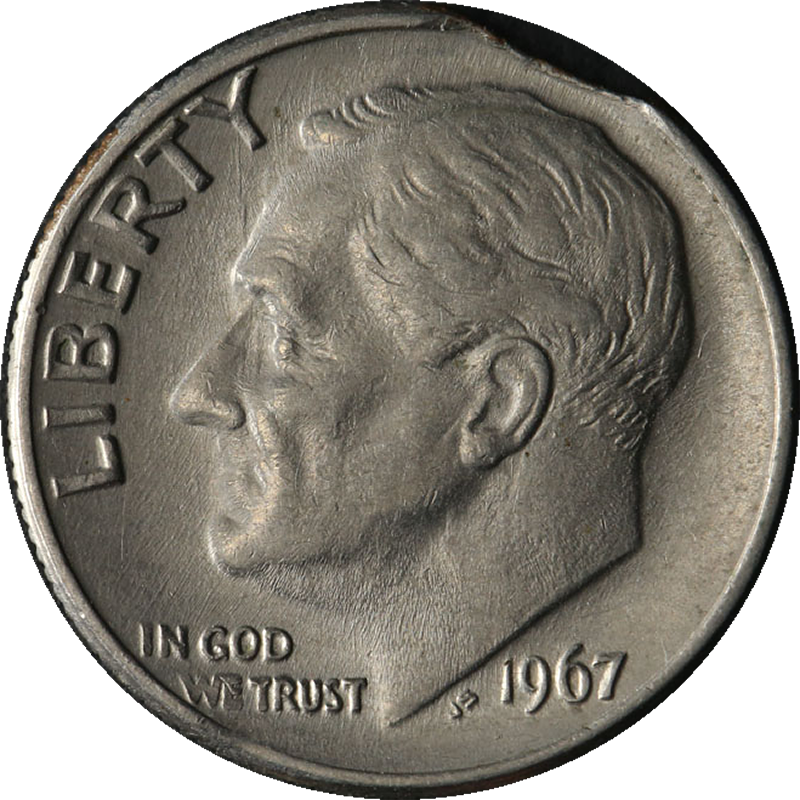
1967 was the centennial of the Canadian confederation and the governement issued a comprehensive series of commemorative coins. The 10 cents shows a mackeral fish.
Years ago these coins were worth face value, or very close to it. But in recent times, with silver moving up in value, the tiny amount of silver in these coins becomes significant.
For most intents and purposes, these coins contain 0.05 troy ounces of silver. So if silver is selling, say, for $30 US dollars per troy ounce, the base value for the coin is 30 x 0.05 = $1.50. Not bad! If you have a few rolls of these coins, you are looking at quite a bit of value. Be sure to find the current value of silver (it changes every day) at kitco.com.
As always in coin collecting, there is a twist. Some 1967 dimes contain 0.06 troy ounces of silver, and other 1967 dimes contain 0.0375 troy ounces of silver. There is no easy way to discern the difference. Both coins look the same and both weigh the same. The composition of the alloy changes from 80 percent silver to 50 percent silver, which gives them differing silver content. The 0.05 troy ounce figure above is an average.
There is controversy about a person's ability to distinguish 80% from 50% dimes. Some people say they can do it by listening to the sound they make when dropped on a hard surface. Others claim that the reeding on the edge of the coin is the tell-tale sign. A specific gravity test would be a sure-fire method. Short of that, CoinQuest knows of no easy method to tell the difference.
1967 Dime Value E Pluribus Unum

1967 Dime Error
Created (yyyymm): 201008, Last review: 201502
Appearance: Normal round coin Metallic gray Letters: Latin
Years: sort: 1967, filter: 1967 to 1967
Image: canada_10_cents_1967.jpg
Original inquiry: 10 cents, canada dated 1867-1967.front picture is a fish.the back has a picture of elizabeth ii. d.o regina mackeral fish
A fish (mackerel) with the value above and the inscription 'CANADA 1867-1967' below. Lettering: 10 CENTS CANADA 1867-1967. CoinTrackers.com has estimated the 1967 Roosevelt Dime value at an average of 10 cents, one in certified mint state (MS+) could be worth $7. Type: Roosevelt Dime. Monty python fruit machine.